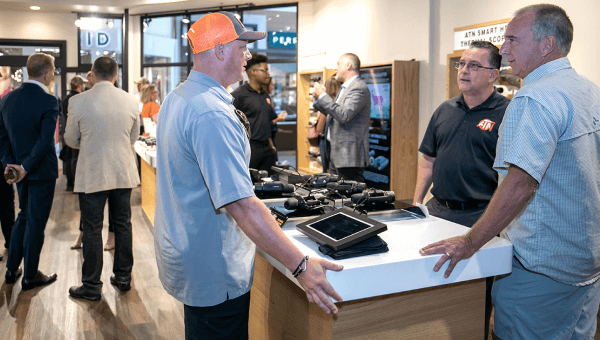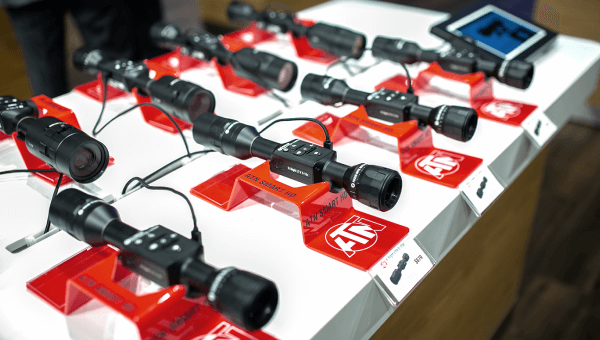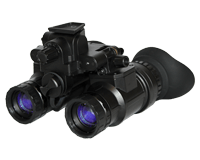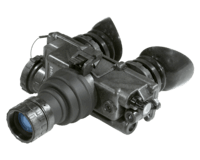In an era of advanced technology, one innovation that continues to make a significant impact across multiple sectors is Night Vision Goggles (NVGs). These devices, well-regarded for their ability to transform low-light environments into clear, observable terrains, have become an essential tool in various areas of application. Whether it's for military operations, law enforcement, wildlife observation, or even entertainment, NVGs have proven indispensable. Understanding the intricate workings of these goggles, their diverse uses, how to effectively select and purchase them, their proper maintenance, and the necessary paperwork for acquiring such devices are all crucial aspects to consider for anyone interested in this technology.
How do night vision goggles work?
Night Vision Goggles (NVGs) operate by capitalizing on a unique technology known as Image Intensification, which significantly enhances the ambient light available, regardless of its low levels. This technology enables the user to perceive an image as if it were a relatively brighter environment, even when the available light is only as faint as that from the moon or stars.
The functioning of NVGs is quite fascinating and involves a multi-step process. To begin with, ambient light, which primarily consists of photons, enters the goggles. The first point of contact for this light within the goggles is a specialized surface known as a photocathode. The interaction between the incoming photons and the photocathode results in the release of electrons.
These electrons are then directed towards a microchannel plate, a component responsible for amplifying the electrons. The microchannel plate is essentially a collection of numerous parallel glass tubes, each acting as an independent multiplier. As the electrons pass through these tubes, they collide with the tube walls, generating more electrons. This multiplication process can create thousands of electrons from a single original one.
The next stage involves the multiplied electrons hitting a phosphor screen. Upon contact with the phosphor screen, the electrons produce flashes of light, which aggregate to form an image. This image, although green due to the phosphor screen, provides a much clearer and brighter view of the surroundings than would be possible with the naked eye under the same light conditions.
Finally, this image is viewed through an eyepiece by the user. Adjustments can be made to the focus and the eyepiece to ensure a comfortable and optimal viewing experience. The entire process happens in real-time, enabling the user to navigate and interact with their surroundings effectively, even in extremely low-light conditions. Thus, through the conversion and amplification of light, NVGs provide a powerful tool for seeing in the dark. This incredible technology has revolutionized nighttime operations across various sectors, making tasks that were once nearly impossible, straightforward and efficient.
The sphere of night vision goggles application
Night Vision Goggles (NVGs) have proven to be invaluable in a wide array of sectors due to their ability to enhance visibility in low-light conditions. Their applications extend far beyond the military, reaching into diverse areas of use. Here's a look at some sectors where NVGs play a crucial role:
- Military and Defense. NVGs are integral to modern warfare. They are used in nighttime surveillance, reconnaissance, and tactical operations, allowing soldiers to maintain visibility during nighttime operations and stay a step ahead of their adversaries.
- Law Enforcement. Police and other law enforcement agencies rely on NVGs for a range of tasks. They are used in search and rescue operations, surveillance, and for apprehending suspects under the cover of darkness.
- Wildlife Observation and Hunting. For wildlife enthusiasts and hunters, NVGs provide the ability to observe nocturnal animals in their natural habitats without disturbing them. This technology has revolutionized nocturnal wildlife observation, research, and ethical hunting practices.
- Aviation. Pilots, especially those flying helicopters and small aircraft during night hours, use NVGs to navigate and land safely. The technology helps pilots to spot obstacles, identify landing zones, and maintain situational awareness.
- Maritime Navigation. Just like in aviation, NVGs are used in maritime environments for navigation during night hours, particularly in unlit areas of the open sea, aiding in spotting potential hazards and other vessels.
- Outdoor Recreation. Campers, hikers, and outdoor enthusiasts use NVGs for better navigation and safety during nighttime adventures. They are particularly useful in spotting wildlife or potential hazards.
- Entertainment. NVGs have found their place in the entertainment industry too. They are used in certain video games and films to provide a realistic representation of night-time scenes and operations.
From professional use in military and law enforcement to recreational use in wildlife observation and outdoor activities, NVGs have a broad spectrum of applications. Their ability to transform night into day has truly revolutionized how we operate in low-light conditions.
How to choose and buy night vision goggles?
When it comes to choosing and buying Night Vision Goggles (NVGs), several key factors should be taken into account to ensure that you select a device that meets your specific needs and provides the best possible performance. The first consideration is the generation of the NVGs. Night vision technology is typically categorized into different generations (Gen 1, Gen 2, Gen 3, and Gen 4), with each subsequent generation offering improved performance, but at a higher cost. Gen 1 devices are the most affordable but offer the least image quality and shortest range. Conversely, Gen 4 NVGs provide the best performance, including superior image quality and range, but they are significantly more expensive.
Another critical aspect to consider is the device's resolution. A higher resolution means a clearer image, which can be crucial when using NVGs for tasks that require a high level of detail, such as wildlife observation or tactical operations. The field of view and magnification capabilities of the NVGs are also important factors. A wider field of view allows for a broader perspective of the environment, while magnification capabilities determine how far you can see with the device. However, keep in mind that a higher magnification often results in a narrower field of view.
If you plan on using the NVGs while moving or need your hands free for other tasks, you should consider a device that can be mounted to a helmet. This feature can be particularly useful for activities like hunting, hiking, or military operations.
The effectiveness of using night vision devices, such as digital night vision scopes and binoculars, is significantly influenced by the user's understanding and proficiency with the equipment. Before embarking on an outdoor excursion like hunting, it's crucial to familiarize oneself with the device in a controlled environment. This way, you'll have a clear understanding of how to operate the device and what to expect from it in terms of performance.
Training in a dark room before heading outdoors provides a safer, more manageable setting to learn the device's controls, understand the image clarity, and adapt to the different perspectives that night vision technology provides. Also, practicing navigation and object recognition in this environment can help the user become more proficient and comfortable when using the device in more challenging outdoor conditions.
Therefore, spending time to learn and train with these night vision devices in a controlled environment is a crucial preparatory step. Not only does it enhance your safety and efficiency, but it also maximizes the benefits of the device during actual usage, ensuring a successful and rewarding experience.
Maintenance of night vision goggles
Maintaining Night Vision Goggles (NVGs) is essential to ensure their long-lasting performance and reliability. Proper care and handling can extend the life of these devices and maintain the quality of their imaging capabilities. Here are some crucial maintenance tips to follow:
- Cleaning. Regular cleaning is vital for keeping NVGs in good condition. However, avoid using harsh cleaning solutions that can damage the goggles' lenses or coatings. Instead, use a soft, lint-free cloth and a gentle lens cleaner. Clean the outer casing with a damp cloth, but ensure that no water enters the device.
- Storage. NVGs should be stored in a cool, dry place when not in use. Exposure to extreme temperatures or humidity can damage the internal components. Always store them in a protective case to prevent physical damage.
- Avoid Bright Light. When the goggles are switched on, do not expose them to bright light. This can overload the device and cause irreversible damage to the image intensifier tube.
- Battery Care. Always remove the batteries when the goggles are not in use for an extended period. This prevents battery leakage, which can corrode and damage the device.
- Inspection and Servicing. Regularly inspect the goggles for any signs of wear and tear or damage. If you notice any issues, it's best to have them serviced by a professional. Attempting to repair NVGs yourself can lead to further damage and may void the warranty.
Here's a quick reference table summarizing these maintenance tips:
| Maintenance Tips | Description |
|---|
| Cleaning | Use a soft, lint-free cloth and gentle lens cleaner for lenses, and a damp cloth for the outer casing. |
| Storage | Store in a cool, dry place in a protective case. |
| Avoid Bright Light | Do not expose the goggles to bright light when switched on. |
| Battery Care | Remove the batteries when not in use for an extended period. |
| Inspection and Servicing | Regularly inspect the goggles for any signs of wear and tear. Have them serviced by a professional if needed. |
By adhering to these maintenance guidelines, you can ensure the longevity and optimal performance of your NVGs. Remember, a well-maintained device not only performs better but also proves more reliable in critical situations.
















